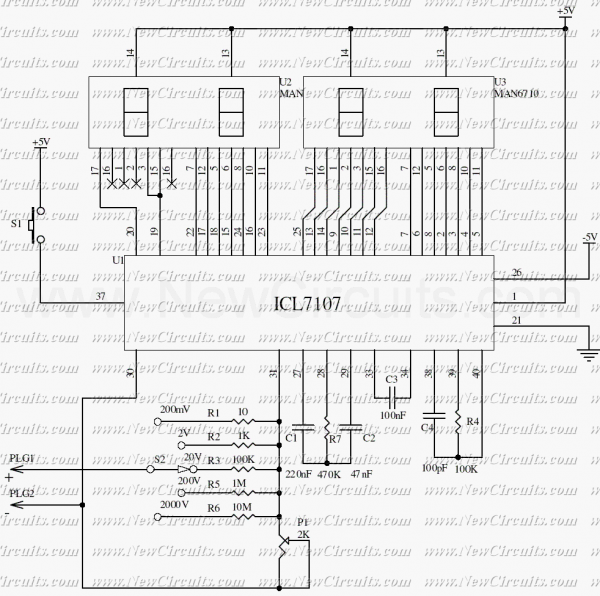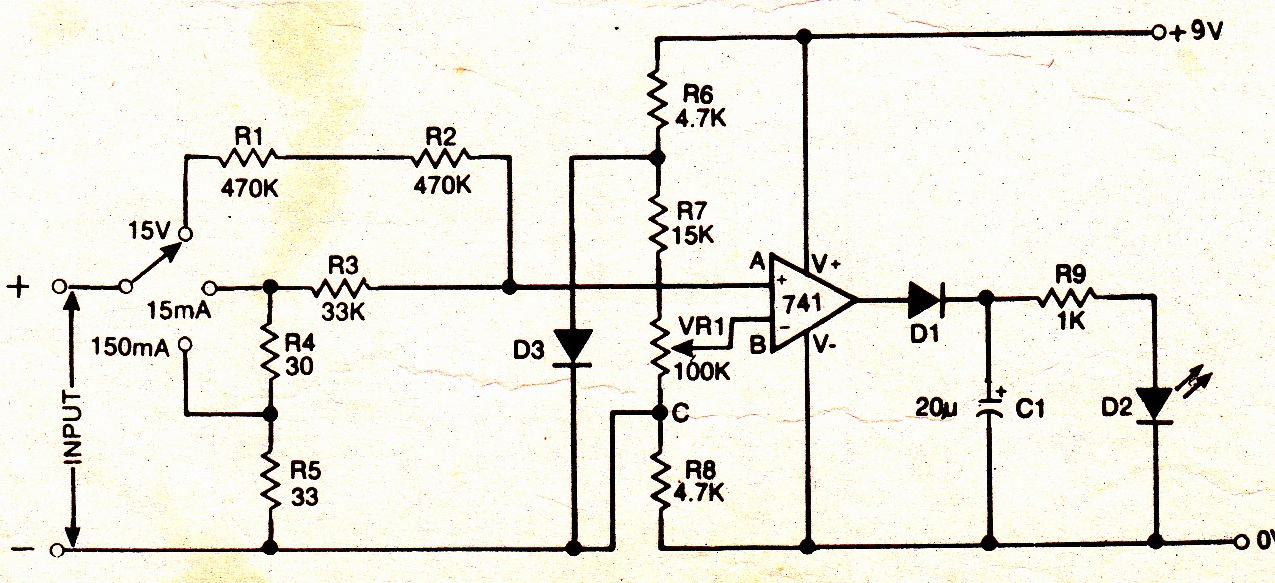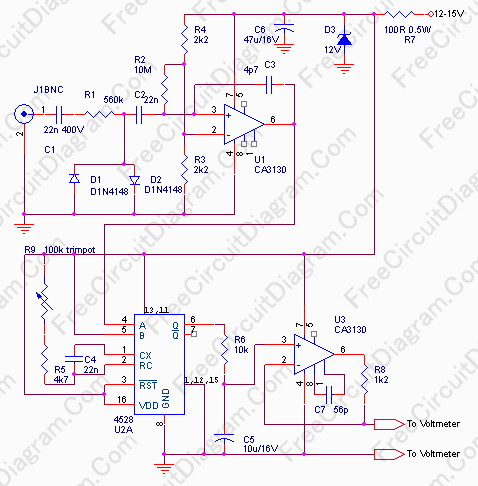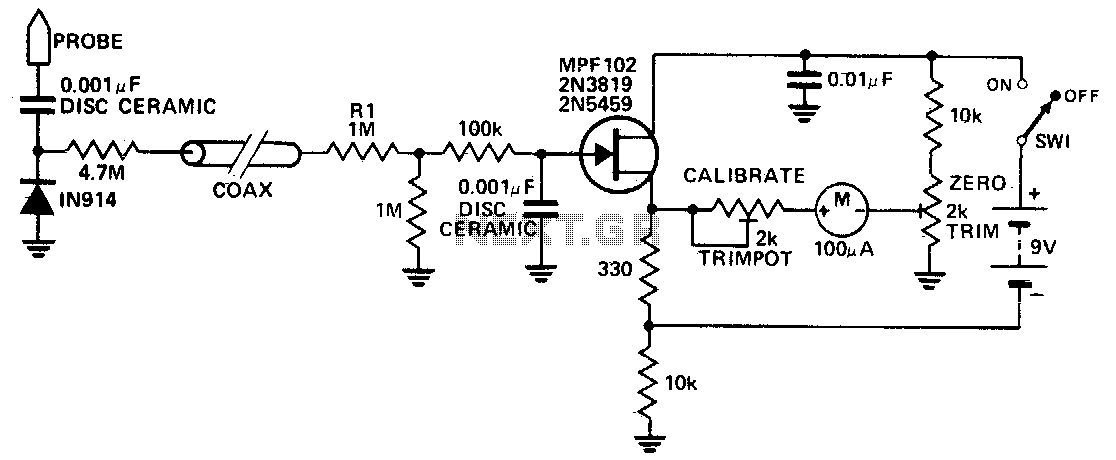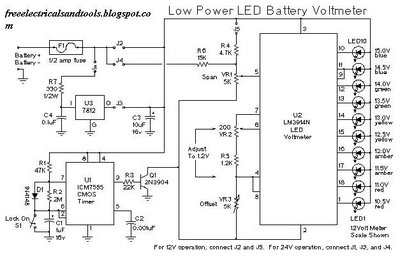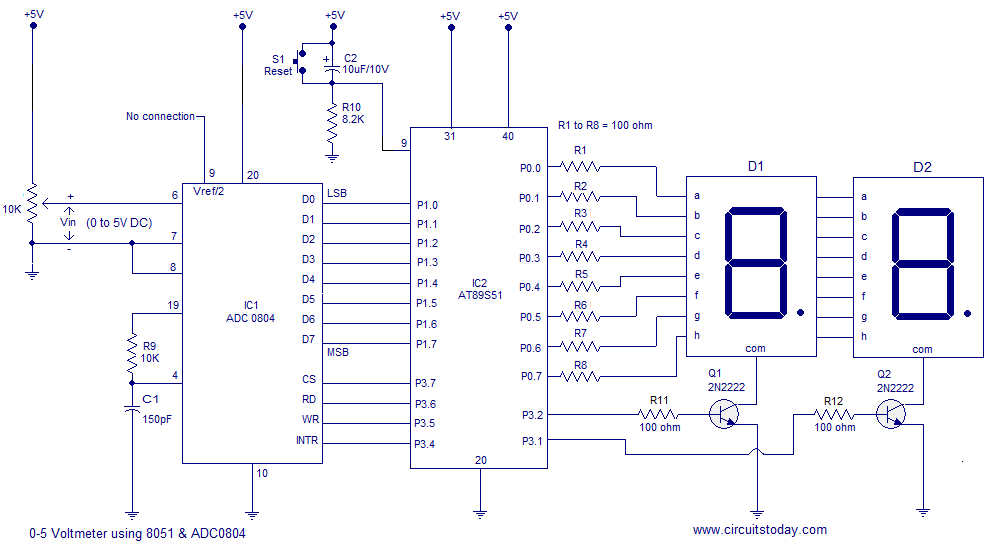
AC VOLTMETER
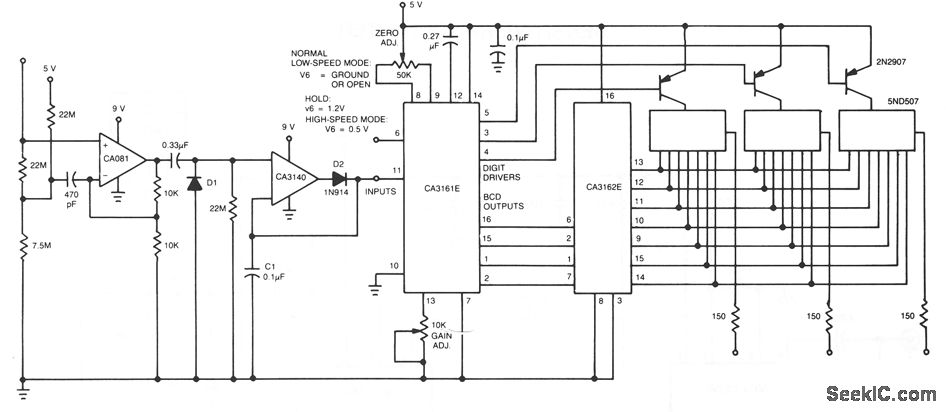
The CA081 and CA3140 BiMOS operational amplifiers provide minimal loading on the circuits being measured. The wide bandwidth and high slew rate of the CA081 enable the meter to operate at frequencies up to 0.5 MHz.
The CA081 and CA3140 are designed to enhance performance in various electronic applications, particularly in measurement systems where circuit loading must be minimized. The BiMOS technology combines the advantages of bipolar and CMOS transistors, resulting in high-speed operation and low power consumption.
The CA081 features a wide bandwidth, making it suitable for applications that require fast signal processing. Its high slew rate ensures that it can respond quickly to changes in input signals, maintaining accuracy even at elevated frequencies. With the capability to operate up to 0.5 MHz, the CA081 is ideal for use in oscilloscopes, signal analyzers, and other measurement devices where rapid signal changes are common.
The CA3140, while also a BiMOS op-amp, is often utilized in applications requiring precision and stability. It offers low offset voltage and low noise characteristics, making it suitable for high-fidelity audio applications and instrumentation. Together, these operational amplifiers can be employed in a wide range of electronic designs, providing versatility and reliability in circuit performance.
In summary, the CA081 and CA3140 BiMOS op-amps are essential components for high-speed and low-loading measurement applications, ensuring optimal performance in various electronic systems. Their combined features make them suitable for advanced electronic designs, enhancing the accuracy and efficiency of signal processing tasks.CA081 and CA3140 BiMOS op amp offer minimal loading on the circuits being measured ‚The wide bandwidth and high slew rate of the CA081 allow the meter to operate up to 0. 5 MHz 🔗 External reference
The CA081 and CA3140 are designed to enhance performance in various electronic applications, particularly in measurement systems where circuit loading must be minimized. The BiMOS technology combines the advantages of bipolar and CMOS transistors, resulting in high-speed operation and low power consumption.
The CA081 features a wide bandwidth, making it suitable for applications that require fast signal processing. Its high slew rate ensures that it can respond quickly to changes in input signals, maintaining accuracy even at elevated frequencies. With the capability to operate up to 0.5 MHz, the CA081 is ideal for use in oscilloscopes, signal analyzers, and other measurement devices where rapid signal changes are common.
The CA3140, while also a BiMOS op-amp, is often utilized in applications requiring precision and stability. It offers low offset voltage and low noise characteristics, making it suitable for high-fidelity audio applications and instrumentation. Together, these operational amplifiers can be employed in a wide range of electronic designs, providing versatility and reliability in circuit performance.
In summary, the CA081 and CA3140 BiMOS op-amps are essential components for high-speed and low-loading measurement applications, ensuring optimal performance in various electronic systems. Their combined features make them suitable for advanced electronic designs, enhancing the accuracy and efficiency of signal processing tasks.CA081 and CA3140 BiMOS op amp offer minimal loading on the circuits being measured ‚The wide bandwidth and high slew rate of the CA081 allow the meter to operate up to 0. 5 MHz 🔗 External reference
